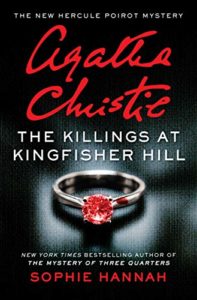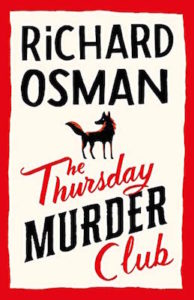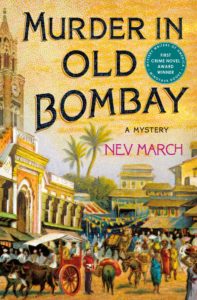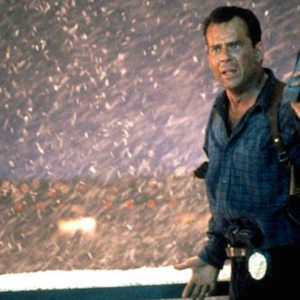In a year where pretty much everything’s gone topsy-turvy, it can be a revolutionary act to simply follow the rules. Traditional mysteries, when done right, bring a little more order to the everyday, even as they keep us guessing. The best new traditional mysteries carry the legacy of their forebears—while at the same time poking fun at tropes, dissecting assumptions, and embracing novel settings. No matter what new twists each author brings, the hallmarks of the traditional mystery remain the same: inspectors look for clues, characters look for alibis, and readers can look to fictional sleuths to work everything out by the end.

Louise Penny, All The Devils Are Here
(Minotaur)
Penny takes a break from her usual Quebec setting in the 16th novel to feature Inspector Gamache, who’s headed to Paris for a rare break. Of course, no sooner has he arrived then he witnesses an attack against his godfather, and to protect his elderly mentor from further harm, he must investigate the decades-old roots of a long-simmering resentment. Although the denizens of Three Pines have been left out of the pages, Louise Penny still delivers as much character-driven drama and atmospheric suspense as any fan could hope for. –MO

Alex Pavesi, The Eighth Detective
(Henry Holt)
Alex Pavesi’s The Eighth Detective is a delightfully deconstructed puzzle of a mystery. A mathematician living alone on a remote Meditteranean island once crafted seven perfect detective stories, long out of print until an editor comes knocking with the hopes of republishing his tales. As she works through a new edition with the old storyteller, the editor notes inconsistencies with his stories that hint at a larger mystery. We’re always fans of books-within-books at CrimeReads, and Pavesi’s metafictional masterpiece checks all the boxes. –MO

Martin Edwards, Mortmain Hall
(Poisoned Pen Press)
Martin Edwards has long been a champion of the Golden Age of detective fiction, serving as series editor for the British Library Crime Classics series and spreading the gospel of fair play and clever plotting. His own novels pay homage to the beloved traditions of the genre, while spinning fresh versions of classic tropes. In Mortmain Hall, Edwards’ follow-up to his debut Gallows Court, a dying man begins to explain a perfect crime, but expires before he can finish. Meanwhile, a detective races to prevent a murder when no one around him takes the threat seriously. Edwards does justice both to his inspirations and to his 1930s setting—a perfect traditional mystery. –MO

Sophie Hannah, The Killings at Kingfisher Hill
(William Morrow)
Among the many posthumously-continued mystery series, is any in better hands than Sophie Hannah’s? The poet and crime scribe has managed to keep the spirit of Agatha Christie’s Poirot novels alive while always introducing new touches and flourishes to keep readers guessing and delighted. In her latest, Poirot is summoned to the proverbial country estate, traveling by luxury train where a fellow passenger’s mysterious fears of being murdered, later confirmed, may have a link to the case Poirot has been asked to address: the possible vindication of a woman soon to be hanged for murder. Insidious motivations and secret pasts converge in high Christie fashion, as the puzzle plays out in highly satisfying fashion. –DM

R.V. Raman, A Will to Kill
(Agora)
In this kickoff to a new series, Raman brilliantly evokes Agatha Christie’s classic country estate mysteries for modern-day India. When a patriarch emerges from a legal battle victorious and with his estate again free to dispense, he summons his family to a mansion in the Nilgiris valley. Knowing he’s at risk of coming to an untimely end at his relatives’ hands, he draws up two wills, in sharp conflict with one another, with one set to prevail depending on the exact manner of his death. It’s an ingenious plot, and Raman takes obvious delight in teasing out the suspense to great effect. –DM

Ruth Ware, One by One
(Gallery/Scout)
Ware has quickly earned herself a place atop the psychological thriller world in recent years, and One by One, which brings in elements of the traditional mystery, is an exciting new addition to her body of work. A London-based tech company organizes a corporate retreat in the French Alps, complete with team-building exercises and all the powerpoint presentations a person can stand. The surroundings are luxurious, but a storm and an avalanche ratchet up the tensions, as does the possibility of a company buyout. When one of the co-workers goes missing on the mountain, the stakes are raised that much more, as colleagues and uneasy friends begin to turn on one another. Read this one now and it’s a safe bet there’ll be a very attractive adaptation for you to watch in the near future. –DM

Richard Osman, The Thursday Murder Club
(Pamela Dorman Books)
Richard Osman’s wonderful, adorable mystery, The Thursday Murder Club, is the charming whodunnit you’ve been waiting for. Four friends—Ron, Joyce, Ibrahim, and Elizabeth—meet every week in their English retirement community to solve cold cases, but when someone nearby is murdered for real, the Club must put their skills to the test. But much more than containing such a perfect premise, this novel is also very rich and deep in drawing its characters, and you won’t be able to stop thinking about it when you’re done. Plus it’s frequently laugh-out-loud funny. If you’re looking for a book to give someone for the holidays, you should look no further. This joyous romp of a novel will delight and enchant everyone on your gift list. In fact, I, myself, got it for my sister. And, wow, I really hope she does not see this article. –Olivia Rutigliano, CrimeReads Assistant Editor

Lynne Truss, Murder By Milk Bottle
(Bloomsbury)
Lynne Truss’ playful attitude towards language and appreciation for quirky detail makes her a perfect fit for traditional mysteries. In Murder By Milk Bottle, Truss’ Brighton-based detective Constable Twitten is assigned a puzzling new case—three bodies have been found murdered by the titular bottle of yore, and it’s up to Twitten to find out what the three dead strangers could possibly have in common, before their number grows. –MO

Nev March, Murder in Old Bombay
(Minotaur)
March’s debut is a lively adventure through colonial-era Bombay, in which an injured captain, recently returned from battle and comforted only by his re-reading of beloved Sherlock Holmes stories, decides to take on a mystery of his own. Two women have fallen to their deaths from a university clock tower, and Captain Jim Agnihotri is beseeched by a widower who wants him to investigate and clear suspicions of suicide. March has an uncanny talent for conjuring up the hidden corners and personalities of late 19th century Bombay. Murder in Old Bombay has already been given a first novel award by Minotaur and the Mystery Writers of America, and this one is absolutely worthy of the honor. –DM

Anthony Horowitz, Moonflower Murders
(Harper)
With Moonflower Murders, Horowitz delivers another masterpiece of metafiction, fresh off the heels of Magpie Murders. Retired-publisher-turned-hotelier Susan Ryeland grows weary of the paradisiacal Greek island she now calls home, so she’s bursting with curiosity when a family staying at the hotel shares a disturbing tale about a long-ago crime—one she recognizes as the inspiration for a best-selling mystery novel she once published. When the family’s daughter goes missing soon after reading the book, it’s up to Susan to track the errant teenager down and find out who really killed who way back when. –MO

















